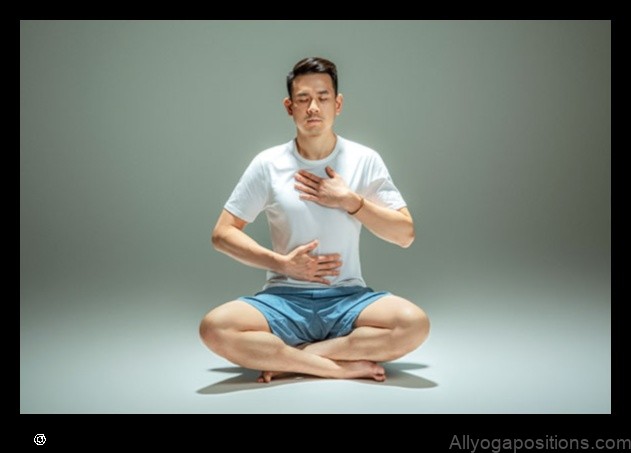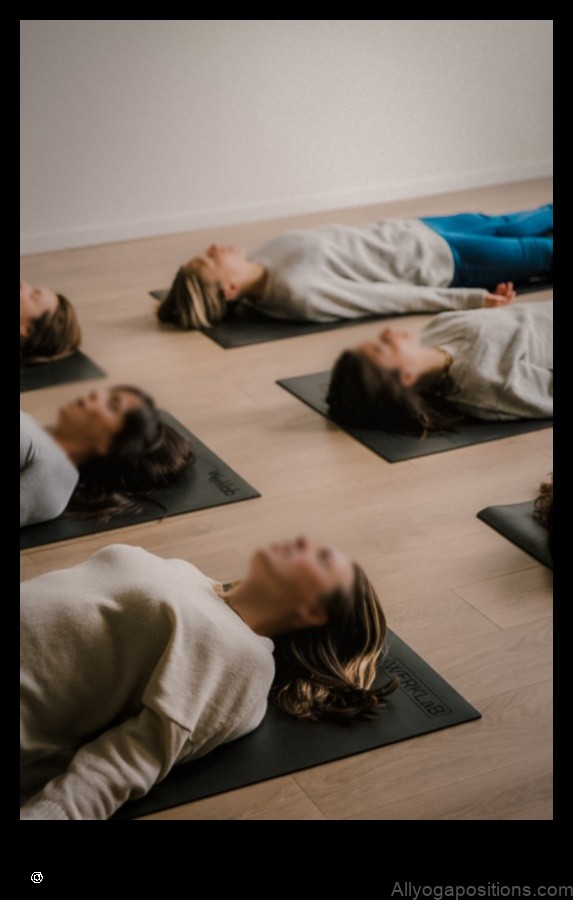
Introduction
Emotional resilience is the ability to withstand and recover from setbacks and challenges. It is a key component of mental health and well-being. Yoga and holotropic breathwork are two practices that can help to improve emotional resilience.

Yoga for Emotional Resilience
Yoga is a mind-body practice that combines physical postures, breathing exercises, and meditation. It has been shown to have a number of benefits for mental health, including reducing stress, improving mood, and increasing mindfulness.
Yoga can help to improve emotional resilience by teaching you how to manage stress and emotions in a healthy way. It can also help you to develop a greater sense of self-awareness and self-compassion.
Benefits of Yoga for Emotional Resilience
- Reduces stress
- Improves mood
- Increases mindfulness
- Develops self-awareness
- Develops self-compassion
Holotropic Breathwork
Holotropic breathwork is a type of breathwork that is designed to induce altered states of consciousness. It is often used for personal growth and healing.
Holotropic breathwork can help to improve emotional resilience by helping you to release suppressed emotions and trauma. It can also help you to connect with your inner wisdom and intuition.
Benefits of Holotropic Breathwork
- Releases suppressed emotions
- Connects with inner wisdom
- Promotes healing
- Increases creativity
- Enhances well-being
How to Practice Yoga for Emotional Resilience
There are many different ways to practice yoga for emotional resilience. You can find a variety of yoga classes and resources online and in your community.
If you are new to yoga, it is a good idea to start with a beginner class. This will help you to learn the basics of yoga and how to practice it safely.
Once you have learned the basics, you can start to experiment with different types of yoga classes and practices. Find what works for you and what helps you to feel your best.
How to Practice Holotropic Breathwork
Holotropic breathwork is a powerful practice that should only be done under the supervision of a trained practitioner.
If you are interested in trying holotropic breathwork, it is important to find a reputable practitioner who can guide you through the process safely.
Safety Precautions for Yoga and Holotropic Breathwork
Yoga and holotropic breathwork are both safe practices when done correctly. However, it is important to be aware of the potential risks and to take precautions to minimize them.
Some potential risks of yoga and holotropic breathwork include:
- Headaches
- Nausea
- Dizziness
- Lightheadedness
- Chest pain
- Anxiety
- Panic attacks
If you experience any of these symptoms, it is important to stop the practice and seek medical attention immediately.
Conclusion
Yoga and holotropic breathwork are two powerful practices that can help to improve emotional resilience. By practicing these techniques, you can learn to manage stress and emotions in a healthy way, and develop a greater sense of self-awareness and self-compassion.
Resources
- Yoga Alliance
- Holotropic Breathwork International
- Mind
Topic Feature Emotional Resilience The ability to adapt to stress and adversity Yoga A mind-body practice that can help to improve physical and mental health Holotropic Breathwork A breathing technique that can help to release stress and trauma Breathwork A general term for any breathing technique that can be used for relaxation, stress relief, or other purposes Mindfulness A state of awareness in which you are paying attention to the present moment II. Yoga for Emotional Resilience
Yoga is a mind-body practice that has been shown to have a number of benefits for emotional resilience, including reducing stress, improving mood, and increasing self-awareness.
Yoga can help to improve emotional resilience by providing a safe and supportive space to practice mindfulness, relaxation, and self-compassion.
Mindfulness is the practice of paying attention to the present moment without judgment. When we practice mindfulness, we are able to observe our thoughts and feelings without getting caught up in them. This can help us to reduce stress and anxiety, and to gain a greater sense of control over our emotions.
Relaxation is another important component of emotional resilience. When we are relaxed, our bodies are able to function more efficiently, and we are better able to cope with stress. Yoga can help to promote relaxation by releasing tension in the body and mind.
Self-compassion is the practice of being kind and understanding to oneself, even in the face of mistakes or setbacks. When we practice self-compassion, we are able to accept ourselves for who we are, and to forgive ourselves for our mistakes. This can help us to build resilience and to bounce back from difficult experiences.
III. Holotropic Breathwork
Holotropic breathwork is a type of breathwork that is used to induce a non-ordinary state of consciousness. It is often used for personal growth and healing, and has been shown to have a number of benefits for emotional resilience, including:
- Reduced stress and anxiety
- Improved mood
- Increased self-awareness
- Enhanced creativity
- Deeper relaxation
Holotropic breathwork is typically practiced in a group setting, with a facilitator guiding the participants through the process. The facilitator will typically play music and encourage the participants to breathe deeply and rhythmically. As the participants breathe, they may experience a variety of sensations, including:
- Emotional release
- Visualizations
- Altered states of consciousness
Holotropic breathwork is a safe and effective way to improve emotional resilience. However, it is important to note that it can be intense, and it is important to work with a qualified facilitator.
IV. Benefits of Yoga and Holotropic Breathwork
Yoga and holotropic breathwork have a number of benefits in common, including:
- Reduced stress and anxiety
- Improved mood and well-being
- Increased mindfulness
- Enhanced physical and mental health
- Improved sleep
- Reduced pain
- Enhanced creativity
- Increased spiritual awareness
In addition, holotropic breathwork has been shown to have specific benefits for emotional resilience, including:
- Helping to process trauma
- Reducing fear and anxiety
- Promoting emotional release
- Increasing self-awareness
- Enhancing self-compassion
These benefits can help people to better cope with stress, manage their emotions, and live more fulfilling lives.
V. How to Practice Yoga for Emotional Resilience
Yoga is a mind-body practice that can help you to improve your emotional resilience. There are many different types of yoga, and each one offers its own unique benefits. Some of the most common types of yoga for emotional resilience include:
- Hatha yoga
- Vinyasa yoga
- Yin yoga
- Iyengar yoga
- Ashtanga yoga
No matter what type of yoga you choose, the key is to find a class or teacher that you feel comfortable with. You should also make sure to listen to your body and modify the poses as needed.
Here are some tips for practicing yoga for emotional resilience:
- Start slowly and gradually increase the intensity of your practice over time.
- Focus on your breath and allow yourself to relax into the poses.
- Be mindful of your thoughts and emotions, and let them go as you exhale.
- Listen to your body and modify the poses as needed.
- Practice yoga regularly to reap the full benefits.
Yoga can be a powerful tool for improving your emotional resilience. By practicing yoga regularly, you can learn to manage stress, cope with difficult emotions, and build a stronger sense of self.
VI. How to Practice Holotropic Breathwork
Holotropic breathwork is a type of breathwork that is designed to help you connect with your subconscious mind and release emotional blockages. It is often used as a tool for personal growth and healing.
To practice holotropic breathwork, you will need to find a quiet place where you will not be disturbed for at least an hour. You will also need to have a facilitator who is trained in holotropic breathwork.
Once you are in a comfortable position, the facilitator will begin to guide you through a series of breathing exercises. These exercises will help you to relax and connect with your inner self.
As you breathe deeply, you may begin to experience a variety of sensations, including tingling, heat, or visions. These sensations are normal and are part of the process of releasing emotional blockages.
The facilitator will be there to support you during this process and to help you integrate any insights that you may have.
Holotropic breathwork can be a powerful tool for healing and growth. However, it is important to practice it with a qualified facilitator.
VII. Safety Precautions for Yoga and Holotropic Breathwork
Yoga and holotropic breathwork are both safe practices when done correctly. However, there are some safety precautions that you should take before and during your practice.
Before you practice:
- Make sure you are in a safe and comfortable environment.
- Wear loose, comfortable clothing.
- Listen to your body and stop if you feel uncomfortable.
During your practice:
- Stay hydrated by drinking plenty of water before, during, and after your practice.
- Breathe deeply and slowly.
- If you feel lightheaded or dizzy, stop and rest.
If you have any underlying health conditions, talk to your doctor before starting a yoga or holotropic breathwork practice.
Conclusion
Yoga and holotropic breathwork are two powerful tools that can help you improve your emotional resilience. By practicing these techniques, you can learn to manage stress, regulate your emotions, and connect with your inner self. When you are more resilient, you are better equipped to handle life’s challenges and setbacks.
If you are interested in learning more about yoga or holotropic breathwork, there are many resources available to you. You can find classes at your local yoga studio or community center, or you can learn from online tutorials or books.
Yoga and holotropic breathwork can be a life-changing experience. By practicing these techniques, you can learn to live a more balanced and fulfilling life.
IX. Resources
Here are some resources that you may find helpful:
- Yoga for Emotional Resilience – Yoga Journal
- Holotropic Breathwork for Emotional Healing – Mindful
- Holotropic Breathwork: What It Is and How It Works – Healthline
- Holotropic Breathwork Can Help You Heal Trauma – Psychology Today
You can also find many books and online courses on yoga and holotropic breathwork.
X. FAQ
Q: What is holotropic breathwork?
A: Holotropic breathwork is a type of breathwork that is used to facilitate deep states of consciousness. It is often used for therapeutic purposes, as it can help to release emotional trauma and stress.Q: What are the benefits of holotropic breathwork?
A: Holotropic breathwork can have a number of benefits, including:* Increased emotional resilience
* Reduced stress and anxiety
* Improved sleep
* Increased creativity
* Enhanced spiritual awarenessQ: How do I practice holotropic breathwork?
A: Holotropic breathwork is typically practiced in a group setting with a trained facilitator. The facilitator will guide you through a series of breathing exercises that will help you to reach a deep state of consciousness.Table of Contents
Maybe You Like Them Too
